Kodak Easyshare P712 Review
Review Date: September 1st 2006
Leave a comment about this Review
|
Image Quality
All of the sample images in this Review were taken using the 7M Fine mode, which gives an average image size of around 3.5-4Mb.
Noise
There are 4 ISO settings available on the Kodak Easyshare P712 which you can select at any time if the camera is in the creative shooting modes. Here are some 100% crops which show the noise levels for each ISO setting:
ISO 64 (100% crop) |
ISO 100 (100% crop) |
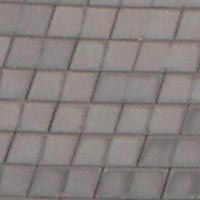 |
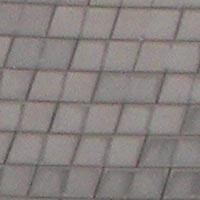 |
ISO 200 (100% crop) |
ISO 400 (100% crop) |
 |
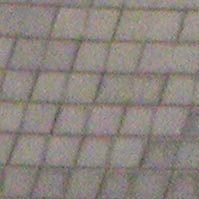 |
There is no discernible noise at the slowest settings of ISO 64 and 100, but at ISO 200 noise is clearly visible, and ISO 400 is virtually unusable. Not a very good performance from the P712.
Sharpening
Here are two 100% crops which have been Saved as Web - Quality 50 in Photoshop. The right-hand image has had some sharpening applied in Photoshop. The out-of-the camera images are soft at the default sharpening setting of Normal and benefit from some further sharpening in a program like Adobe Photoshop. Alternatively you can increase the in-camera sharpening level by choosing the High option.
Original
100% Crop |
Sharpened 100% Crop |
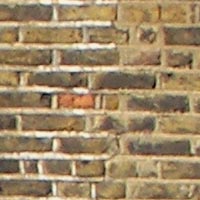 |
 |
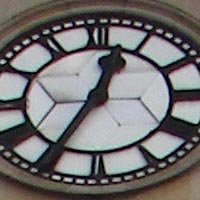 |
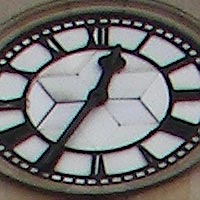 |
File Quality
The Kodak Easyshare P712 has 5 different file quality settings available, with 7M Fine being the highest quality JPEG option, and both RAW and TIFF modes on offer. Here are some 100% crops which show the quality of the various options, with the file size shown in brackets.
| 7M RAW (11.6Mb) |
7M TIFF(20.3Mb) |
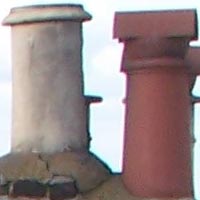 |
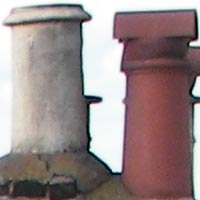 |
| 7M
Fine (3.20Mb) |
7M
Standard (1.98Mb) |
 |
 |
| 7M
Basic (1.34Mb) |
|
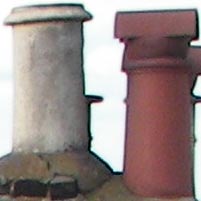 |
|
Chromatic Aberrations
The Kodak Easyshare P712 handled chromatic aberrations extremely well, with only very limited purple fringing in areas of high contrast, as shown in the example below.
| Example
1 |
|
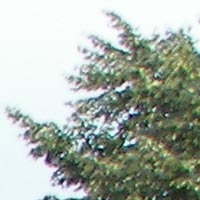 |
|
Macro
The Kodak Easyshare P712 offers a Macro setting that allows you to focus on a subject that is 10cms away from the camera. The first image shows how close you can get to the subject in Macro mode (in this case a compact flash card). The second image is a 100% crop.
| Macro Shot |
100% Crop |
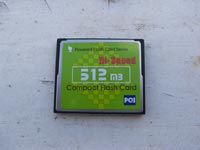 |
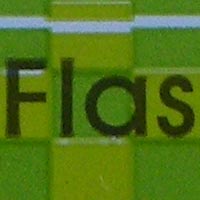 |
Flash
The flash settings on the Kodak Easyshare P712 are Auto, Fill, Red-eye, Slow Sync (front, front-red-eye, rear) and Off. These shots of a white coloured wall were taken at a distance of 1.5m.
| Flash Off - Wide Angle (36mm) |
Auto Flash - Wide Angle (36mm) |
 |
 |
| Flash Off - Telephoto (432mm) |
Auto Flash - Telephoto (432mm) |
 |
 |
And here are some self-portraits. As you can see, neither the Flash On or the Red-Eye Reduction option caused any red-eye.
| Flash Off |
Flash Off (100% Crop) |
 |
 |
| Flash On |
Flash On (100% Crop) |
 |
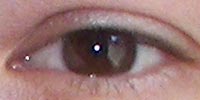 |
Night Shot
The Kodak Easyshare P712 maximum shutter speed is 16 seconds, which is good news if you're seriously interested in night photography. The shot below was taken using a shutter speed of 16 seconds, aperture of f/8 at ISO 64. I've included a 100% crop of the image to show what the quality is like.
| Night Shot |
100% Crop |
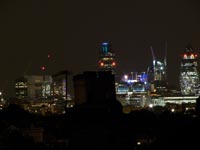 |
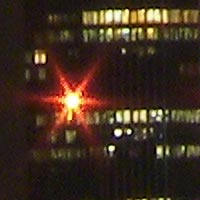 |
Image Stablization
The Kodak Easyshare P712 has an optical image stabilization system, which allows you to take sharp photos at slower shutter speeds than other digital cameras. To test this, I took a handheld shot of the same subject with the ISO speed set to 64. The first shot was taken with anti shake turned off, the second with it turned on. Here is a 100% crop of the image to show the results.
| Shutter Speed / Focal Length | Image Stablization Off |
Image Stablization On |
| 1/6th / 133mm | 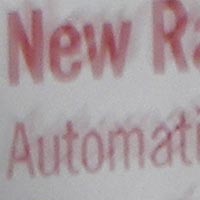 |
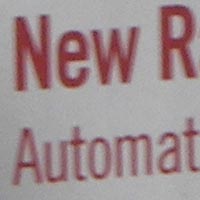 |
As you can see, with anti shake turned on, the image is much sharper than with anti shake turned off. This feature really does seem to make a difference and could mean capturing a successful, sharp shot or missing the opportunity altogether.
Overall Image Quality
The Kodak Easyshare P712 produced images of average quality during the review period. The 7 megapixel images are soft straight out of the camera and ideally require some further sharpening in an application like Adobe Photoshop, or you can increase the in-camera sharpening level. The Kodak Easyshare P712 dealt very well with chromatic aberrations, with only very limited purple fringing effects appearing in high contrast situations. Macro performance is below average, allowing you to focus as close as 10cms away from the subject. The built-in flash worked well indoors with no red-eye and good overall exposure. The night photograph was very good too, with the maximum shutter speed of 16 seconds offering lots of scope for creative night photography. Image stabilization is a feature that sets this camera apart from its competitors and one that works very well when hand-holding the camera in low-light conditions or when using the telephoto end of the zoom range. The Kodak Easyshare P712's worst feature in terms of image quality is the high noise levels at ISO 200 and above, limiting the camera to use outside or in good lighting conditions, although the effective image stabilisation system does compensate for this to some extent.
|
![]() PhotographyBLOG
is a member of the DIWA
organisation. Our test results for the Kodak Easyshare P712
have been submitted to DIWA
for comparison with test results for different samples of
the same camera model supplied by other DIWA
member sites.
PhotographyBLOG
is a member of the DIWA
organisation. Our test results for the Kodak Easyshare P712
have been submitted to DIWA
for comparison with test results for different samples of
the same camera model supplied by other DIWA
member sites.
